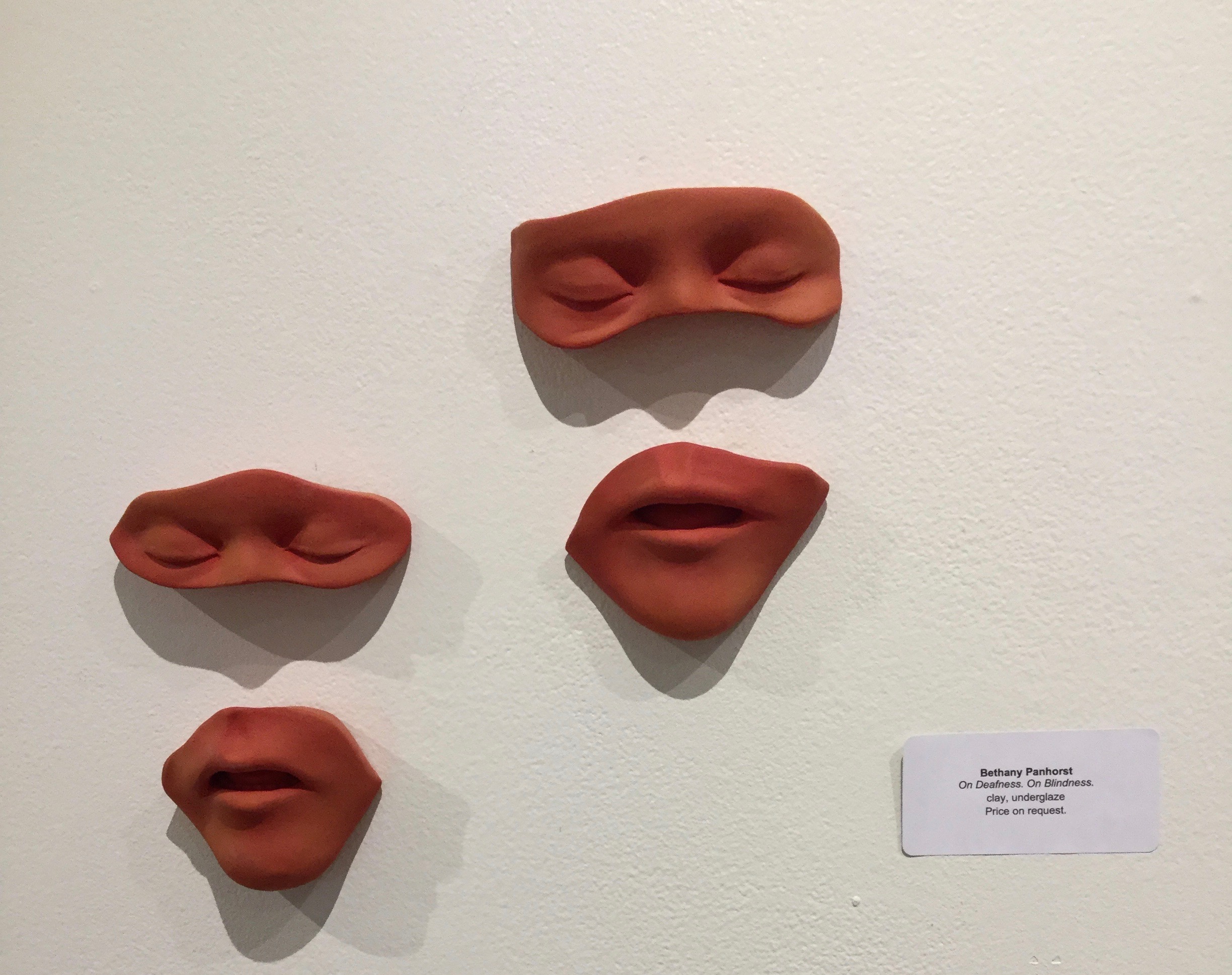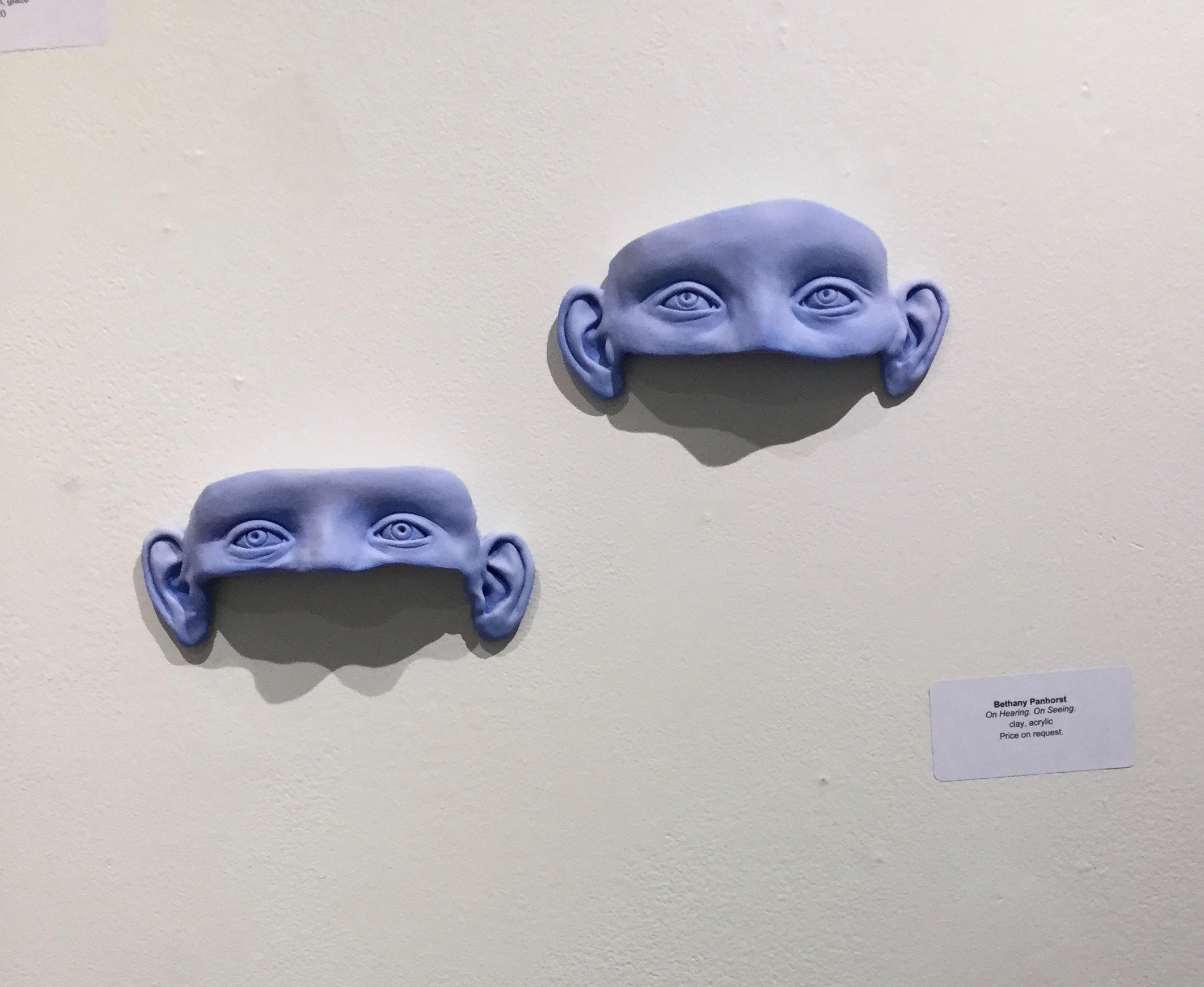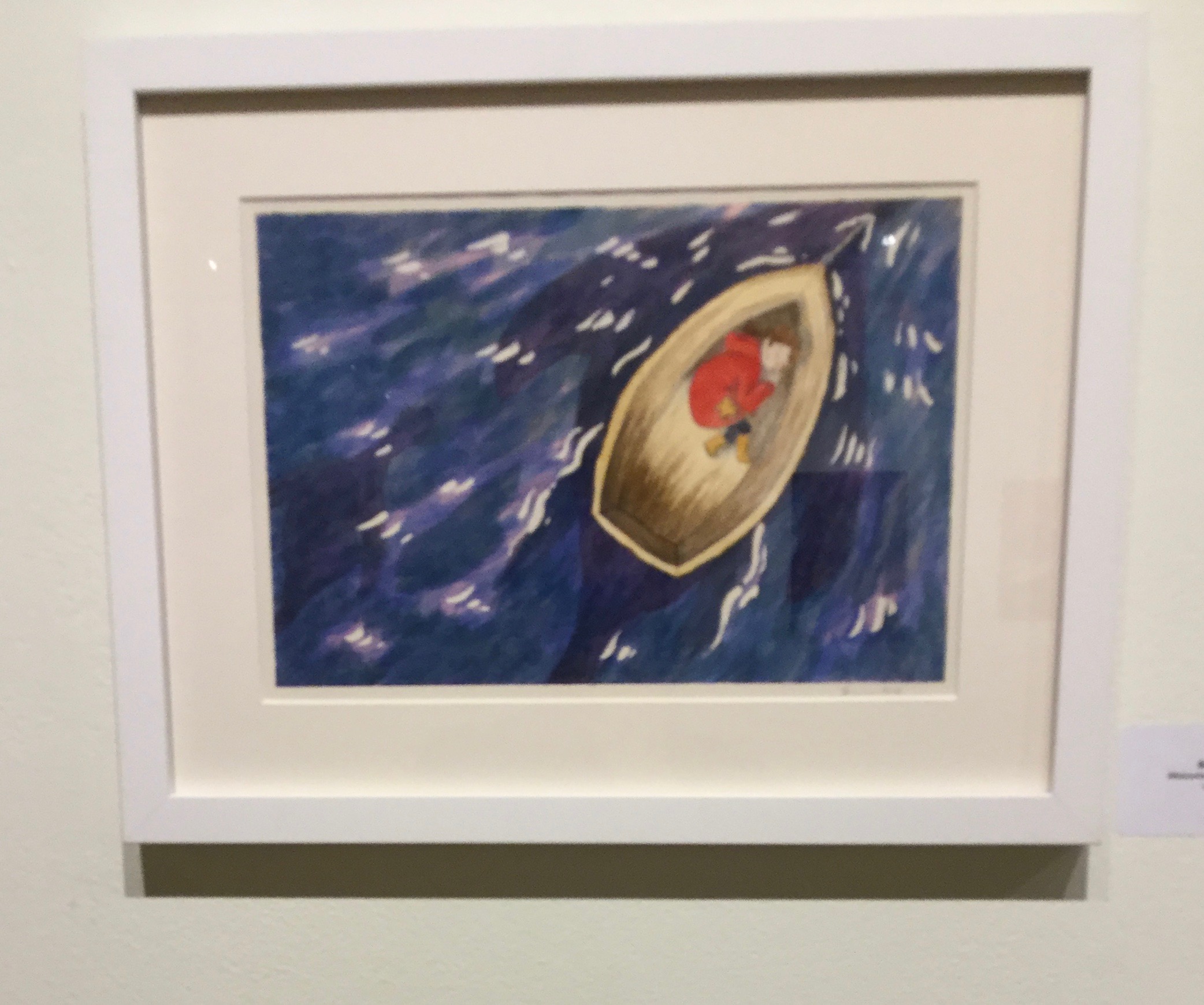Rebecca Munday, Staff Writer
Most people take for granted the saying “A picture is worth a thousand words,” but the senior exhibition “Reflections” will make viewers think about what that saying really means.
In the descriptions of their work, the student artists all mentioned the different ways they wanted to convey a story through their work. For a couple of the artists, they wanted to portray well-known biblical stories while others invited the viewer into stories from their life.
Among the many different stories that the artists told through their works, all of them had the effect of making the viewer conscious of the idea of visual storytelling.
Bethany Panhorst created one of the most mind-bending examples of this concept with two of her pieces.
The first one was “On Deafness, On Blindness”. The second one is titled, “On Hearing, On Seeing”. These sculptures represent “the blind receiving sight” as she says in her description of her work.

However, the first piece has no ears. It is two separate pieces of clay. One depicts the bottom of the face with open lips and the other, which is only large enough to be a masquerade mask, shows closed eyes. The second piece is only ears and eyes and again only large enough to be a masquerade mask. It’s almost as if the second mask stares at the viewer.

The sculptures require careful thought to put together the pieces of the story and fully appreciate them.
Bible stories also inspired Rose Wellington, but her paintings tell a different story with the allegories she uses.
“Each canvas narrates a scene which translates a message of trials and tribulations,” the artist says in her description of her work.
She achieves this with the intensely dark shades of browns, oranges, and reds. The dark color palate is evocative of the trial and hardship conveyed in the painting.
June Ford tells the story of her childhood with her paintings by using the “deeply saturated colors,” she says filled her childhood in Costa Rica to pull the viewer into the landscapes of her childhood.
Another artist, Pamela Reynolds, took an autobiographical approach to her visual storytelling. She says each of the subjects in her work represent “particular places, people or memories.”
One of her works that is particularly intriguing is “Bento II”.
The work is primarily travertine stone and the color of beach sand, which makes it hard to tell what the image is from a distance. In fact, from a distance, the only thing the viewer will notice is the black travertine that make up Bento’s eyes and nose.
However, if the viewer examines the work more closely, they will realize the artist put more space between the tiles that make up the background, the tiles that make up the dog and used a darker more golden-colored travertine for patches of the dog’s fur, so the outline of the dog becomes more clear.
The final artist, Brenna Mudge, took the idea of visual storytelling quite literally when she created her World of Wonder paintings.
In her painting “World of Wonder: The Pull”, she pulls the viewer’s eye to the top right corner of the canvas where the young girl in the fire engine red jacket lie in her canoe, adrift in this body of water that is shades of royal and navy blue with some white mixed into it as well.

This painting, as well as her others, looked like something out of a storybook from kindergarten. She even added mythical creatures to other paintings in the series.
Check out the next Senior Exhibition “The Art of Feeling” in the Fine Arts Hall from April 1-12.





